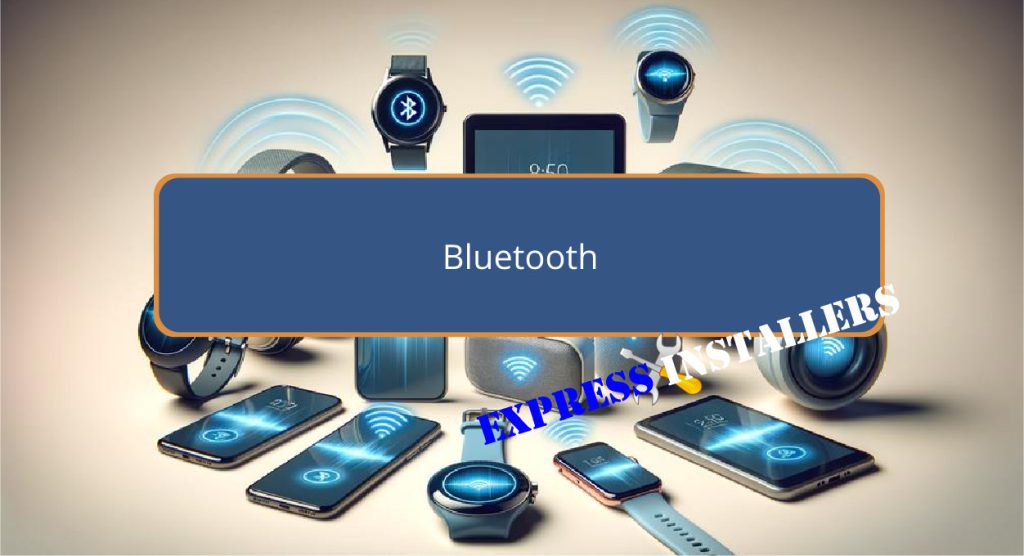
Bluetooth technology offers you seamless wireless connectivity essential for modern digital communications.
Operating within the 2.402GHz to 2.48GHz frequency band, it minimises interference with other wireless technologies.
You’ll find Bluetooth in devices from headphones to smart home systems, using either Bluetooth Classic for high-throughput applications or Bluetooth Low Energy for lower power consumption.
This technology supports various communication topologies, enhancing personal area networks and device interoperability.
It also incorporates robust encryption to address security concerns.
As you explore further, you’ll discover how Bluetooth continues to evolve, providing greater integration within IoT devices and future tech applications.
Quick Summary
- Bluetooth technology enables wireless communication over short distances using radio waves in the 2.4GHz band.
- It includes two main types: Bluetooth Classic for audio and data streaming, and Bluetooth Low Energy for efficient power consumption.
- Common applications include wireless headphones, personal area networks, smart home integrations, and automotive systems.
- Bluetooth devices operate with minimal interference from other wireless technologies, maintaining reliable connectivity.
- Security features in Bluetooth include robust encryption and authentication methods to safeguard against unauthorised access and eavesdropping.
Etymology and Origins
The name ‘Bluetooth’ originates from King Harald Bluetooth of Denmark and Norway, renowned for his role in unifying various Scandinavian settlements.
This historical significance is embedded in the technology’s foundational ethos—connecting disparate entities.
Delving into its etymology, ‘Bluetooth’ is derived from the Old Norse ‘blåtand’, a nod to the king’s notable dark tooth.
This term underscores the deep Old Norse roots influencing modern technological nomenclature.
Further, the Bluetooth logo, a bind rune merging King Harald’s initials in Younger Futhark, symbolises integration, reflective of his diplomatic achievements.
By adopting this name, the technology’s architects emphasised a parallel between ancient unification and contemporary digital communication, enhancing the term’s resonance across technical and historical dimensions.
Key Implementations
Reflecting on its historical roots, Bluetooth technology has evolved to include key implementations such as Bluetooth Classic and Bluetooth Low Energy, each serving distinct communication needs.
You’ll find Bluetooth Classic operating across 79 channels in the 2.4GHz band, making it ideal for robust wireless connections in audio streaming and data transfer scenarios.
It adheres to protocol standards that facilitate efficient point-to-point device communications, often seen in devices like wireless headphones and in-car entertainment systems.
Bluetooth Low Energy (LE), on the other hand, uses 40 channels within the same band, designed specifically for low power consumption while supporting diverse communication topologies.
This flexibility enables developers to create solutions that meet market demands for large-scale device networks and precision indoor location services.
Uses and Applications

Bluetooth technology seamlessly connects your devices, enhancing daily interactions with wireless convenience and efficiency.
In real-world examples, you’ll find Bluetooth in wireless headphones linked to smartphones, facilitating uninterrupted music streaming and calls.
Industry impact is evident as Bluetooth creates personal area networks (PANs) for efficient data sharing among devices.
This capability transforms user experience by simplifying connectivity in various scenarios, from smart homes to automotive systems where Bluetooth enables hands-free calling and audio streaming.
Looking ahead, future developments in Bluetooth technology promise even greater integration in daily life, potentially expanding to more IoT devices and improving smart connectivity.
This ongoing evolution will further refine how you interact with technology, making wireless solutions more intuitive and integrated into everyday activities.
Technical Specifications
You’ll find that Bluetooth operates within a frequency range from 2.402GHz to 2.48GHz, guaranteeing reliable communication between devices.
This frequency band, coupled with a transmission power of 2.5 milliwatts, allows for a standard range of up to 10 meters.
Key aspects to keep in mind include:
- Frequency Bands: Guarantees minimal interference with other wireless technologies.
- Transmission Power: Limits are set to maintain energy efficiency and signal integrity.
- Range: Typically up to 10 meters, but can vary based on environmental factors and device capabilities.
- Backward Compatibility: Supports seamless connectivity between devices of different Bluetooth versions.
Understanding these technical specifications helps you maximise the efficiency and functionality of your Bluetooth-enabled devices.
Security and Health Concerns

Despite its widespread use, Bluetooth technology presents certain security risks and health concerns that you must be aware of.
Devices are susceptible to eavesdropping and unauthorised access due to vulnerabilities in communication protocols.
Implementing robust encryption and authentication mechanisms is vital to mitigate these privacy risks.
Concerning health, the electromagnetic exposure from Bluetooth devices is notably low. Given their low power output and short-range operation, the risk associated with radiation is minimal.
Nonetheless, staying informed about continuous advancements in Bluetooth technology aimed at enhancing security and addressing health implications is important.
You can further reduce security risks by regularly updating your devices, utilising secure passwords, and exercising caution with Bluetooth connections in public spaces.
Frequently Asked Questions
How Do I Connect to Bluetooth?
To connect, start by ensuring your device is compatible. Next, enable discovery mode, navigate to Settings, select ‘Bluetooth & devices,’ and initiate the pairing process. Confirm the connection once your device appears.
Should I Have My Bluetooth On or Off?
You should keep it off to enhance security and conserve battery life. Activating it only when necessary minimises exposure to vulnerabilities and interference, aligning with best practices for device management and data protection.
How Do I Find My Bluetooth?
To locate your Bluetooth, open Settings, navigate to ‘Bluetooth & devices,’ and make sure it’s activated for visibility and device compatibility. Check the taskbar’s quick settings or adjust them for easier access.
How Do I Turn on My Bluetooth?
To activate your feature, confirm device compatibility, then navigate to Bluetooth settings in your system’s options. Toggle the switch to ‘On’ to establish wireless connections with compatible peripherals.
Conclusion
In summary, you’ve navigated the complex landscape of Bluetooth technology, from its historical roots to its expansive use in modern devices.
Understanding its technical specifications and security protocols is essential for harnessing its full potential and mitigating associated risks.
As you implement Bluetooth, always consider the latest standards to guarantee compatibility and security.
Stay informed about updates to maximise efficiency and safeguard against vulnerabilities in your networked environments.
